What is ISO 14001:2015 Environmental Management System (EMS)?
The ISO 14001:2015 Standard should be used by any organization to improve or maintain an environmental management system and ensure its established environmental policy and requirements. It gives a framework a company or organization can follow to increase an effective environmental management system. The Environmental Management System aims to provide organizations with a framework to protect the environment and respond to changing environmental conditions in balance with socio-economic needs.
ISO 14001 is the cornerstone for environmental management systems (EMS) in businesses, which helps minimize environmental impacts and regulate resource consumption. Implementing an EMS under the ISO standard promotes best environmental management practices, including risk assessment, control of hazardous wastes, performing energy audits, and reducing uses and carbon footprints. ISO 14001 provides a framework for methodical handling of wastes to minimize their volumes and harmful environmental impacts and save money.
Organizations need to obtain the ISO 14001 certification to minimize the impacts of their activities on the environment and demonstrate their obligations to environmental laws and regulations. Other associated benefits include reduction of energy use, resource savings, cost efficiency, and improved corporate reputation.
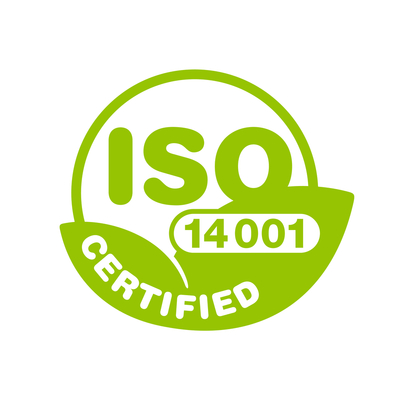
Achieving the ISO 14001 certification is the best way to make the environmental management systems of organizations comprehensive and practical. Waste management practices are the top among the various compliance requirements of the ISO 14001 standard. As a result, you must promote a framework or structured approach for handling waste in your organization. Proper waste management also ensures measurable benefits for the organizations, such as cost reduction.
To achieve the ISO 14001 standard, understanding all its mandatory requirements and whether they’d into the context of your business is necessary. Implementing the Environmental Management System (EMS) by fulfilling all the requirements is quite a complex project. TUV Austria Bureau of Inspection and Certification know the ISO 14001 requirements and EMS. We have practical experience implementing the EME in different organizations by meeting all the compliance requirements. Therefore, We can provide your essential guide and know how to develop and implement the EMS by fulfilling all the ISO 14001 requirements.
If you strive to achieve the ISO 14001 certification, and the highest environmental management accreditation, make sure to take the best approach to make your EME effective, compliant and rewarding for your business. Hiring a team of TUV Austria Bureau of Inspection and Certification is worthwhile. We can fully guide you and lead you to the final certification stage in the least complex way.
This standard aims to provide a framework to protect the Environment by:
- Preventing and mitigating the adverse environmental effects due to Organization’s work.
- Assisting in fulfilling complaint obligations
- Enhancing environmental performance.
Quick Navigation
What Do ISO 14001 Stands for?
ISO 14001 stands for Environmental Management System. It is an International Standard that is used to document an Environmental Management System aligning to statutory and regulatory requirements,
- Structured Approach for Establishing.
- Policies and Objectives.
- Successful Working Practices.
- Sustainable Environmental Policies.
Identify environmental activities, your aspects, impacts, & control measures using a risk assessment for an effective Environmental Management plan.
A Framework to Ensure
- Consistency
- Improvement of working practices
- Developing and implementing an environmental policy that matches legal and sustainability requirements.
What is ISO 14001 Certification?
ISO 14001 Certification is intended to provide organizations with the elements of an effective environmental system, which can integrate with other management requirements to assist organizations in achieving an environmental management system to support it to cover the following major areas:
- Environmental Management System
- Environmental Auditing
- Environmental Labeling
- Life Cycle Assessment

ISO 14001 builds a single global management system that effectively manages environmental responsibilities, liabilities, and costs; documents commitment to the government management system (EMS). ISO 14001 empowers businesses to take control of environmental responsibility and encourages government departments to approach the challenge more flexibly. This certification does not only relate to massive global companies.
The standard states,
“It has been written to apply to all types and sizes of organizations and to accommodate diverse geographical, cultural and social conditions.”
ISO 14001 Certification is an initiative to bring about uniformity in environmental compliance standards to reduce impediments to trade among countries. If accepted and implemented correctly, it can bring about many changes in the present Pakistani Scenario.
A set of International Standards, which bring worldwide focus on the environment, encourage a cleaner, safer, healthier world for all of us. These standards allow organizations to focus their environmental basis on internationally accepted criteria. Many countries and regional groupings are generating their ecological requirements, which vary between them. A single standard will ensure no conflicts between regional interpretations of good environmental practice.
Here’s A Video Tutorial About ISO 14001
Importance of ISO 14001 Certification
The ISO 14001 standard is achievable by any business regardless of its nature or size. It will help them have a regulated framework for environmental quality management, reduce impacts, and focus on sustainability. In short, ISO 14001 certification is helpful for businesses to improve their environmental performance, prevent excessive waste generation, and use resources wisely.
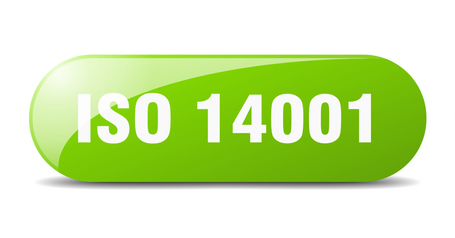
With its intended purpose being to help in environment quality management, ISO 14001 delivers several subsequent benefits to the business. According to ISO 14001 Certification TUV Austria Bureau of Inspection and Certification Team, Some of the prominent benefits are:
- Reduced emissions of greenhouse gases and toxic chemicals.
- Waste treatment and recycling practices
- Full compliance with industrial environmental regulations.
- Optimization o resources and packaging materials.
- Promotion of the use of eco-friendly materials and renewable/alternative energy sources.
- Cost Savings.
The ISO 14001 Certification is a comprehensive, higher-level management certification. Therefore, a business must develop its environmental management system (EMS) and ensure it complies with the certification requirements. ISO 14001 certification is the leading certification for environmental management and sustainability.
Achieving it will help you enhance your commitment to society and better position your business in the industry. Being environmentally responsible will help your business gain consumer confidence, improve stakeholder relationships, save costs, and increase the bottom line.
4 Reasons Why to Implement the ISO 14001 Environmental Management System
Achieving the ISO 14001 certification by a business demonstrates its supreme commitment and responsibility for managing environmental impacts. The ISO standard provides the requirements to build and implement a framework for environmental management, known as Environmental Management System (EMS). So having the ISO 14001 Environmental Management System in your organization ensures compliance with mandatory environmental regulations and helps to have a well-structured approach to handling environmental issues.
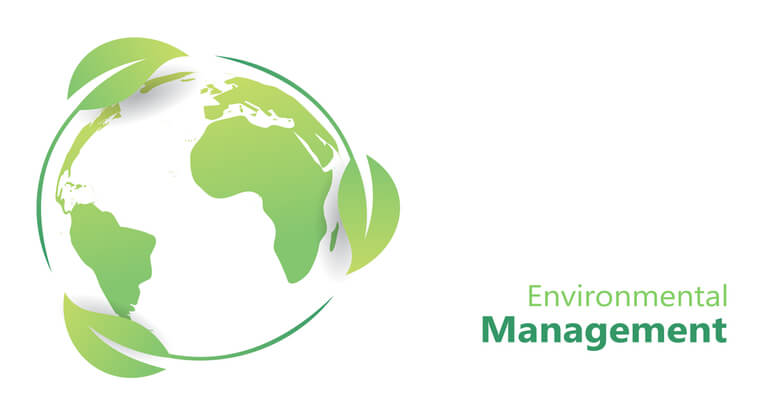
These are the top reasons a business should consider implementing the ISO 14001 EMS.
- Makes the top management of the organization responsible for environmental management. The ISO 14001 standard requires the managers to lead the implementation of EMS and introduce best practices to mitigate, manage, and eliminate risks.
- Implementing ISO 14001 EMS instills confidence in the stakeholders of the business and improves its relationships with them.
- An internationally recognized accreditation is likely to attract new clients for your business, mainly because many organizations seek partners or suppliers that take care of the environment, and the ISO 14001 certification proves that.
- The robust EMS framework implemented also helps identify the environmental risks that might emerge in the future and provide an opportunity to improve environmental performance by preventing those risks.
Getting the ISO 14001 Environmental Management System in your organization helps to have a strategic approach to reduce environmental impacts, prevent or mitigate risks, reduce costs and save energy. If you value the sustainability of the planet and want to stop your business from causing any damage to it, ISO 14001 is the investment you need today. It would not just provide your business with ecological advantages and help you gain a reputation but also give you financial advantages through cost savings, prevention of litigations, or penalties.
Challenges that a Business Faces for ISO 14001 Certification
ISO 14001 is an international standard that has enabled thousands of businesses to minimize their environmental impacts of damages. It ensures that with ISO 14001 certification, a business can enhance its bottom line with a straightforward and effective environmental management system or EMS.
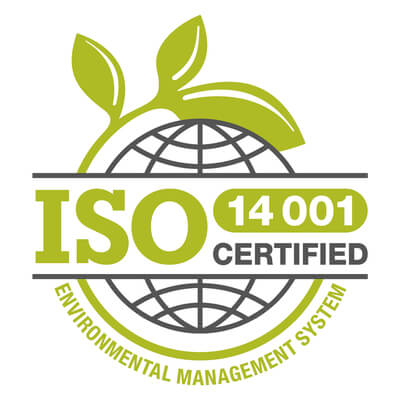
Many businesses are worried about the obstacles they may encounter during the process of ISO certification, despite the benefits of environmental certification.
Many businesses do not know how to achieve ISO certification for environmental management. But what are the most common obstacles? Here is a list we have compiled through evidence provided by organizations.
1). Management Involvement
Achieving ISO 14001 certification is only possible when there’s full enthusiasm, support, and actions from the organization’s top management. In most cases, the management’s involvement is less seen.
2). Setting Environment Goals
Many businesses face difficulty in assuming and forming goals for environmental management. While ISO 14001 standard calls for achieving realistic targets to maximize environmental sustainability, businesses with vast operations and complexities fail to realize the environmental hazards, what they impact, whom they impact, and other effects. As a result, they fail to materialize specific goals.
3). Lack of Knowledge
When formulating their EMS., the business needs to identify the key environmental issues, determine targets and expectations, and match them with real environmental implications. So, if the business is unaware of how its activities affect the environment and how these effects can be resolved, it cannot formalize the aspects of the QMS.
Acquiring support and participation from your business’s internal and external stakeholders is essential for introducing the EMS. However, due to a lack of proper communication or other issues, businesses could fail to engage their stakeholders actively.
Most importantly, the implementation of EMS to achieve the ISO 14001 certification need active involvement from the management. The role of the management is so essential when achieving certification, and that is where many businesses fail because their management focuses on profit-making aspects rather than socio-environmental concerns.
How does ISO 14001 Help Companies Commit to Environmental Sustainability?
Businesses today must be serious about protecting the environment and implementing all the best practices possible. The ISO 14001 certification is the prime step they need to commit to a sustainable future. The international certification for Environmental Management System (EMS) demonstrates that a business has adopted the best environmental practices and is following a strategic approach to remain committed to sustainability.

The ISO 14001 certification leads to implementing a feasible EMS in the business, which helps environmental sustainability. Here is how,
- Development of a strong environmental policy that defines objectives and principles regarding minimization of impacts and use of resources.
- Conducting internal audits frequently helps in identifying areas or processes where resources are used excessively.
- Promotes greener measures or practices such as using eco-friendly packaging materials, saving electricity and water consumption, recycling wastes, use of renewable resources, and soon.
- Strategic planning by assessing the potential environmental risks and initiating new processes that prevent them.
- Promotes fuel-efficient logistics and machinery to reduce carbon emissions as much as possible.
Minimizing the environmental impacts and saving resources are some of the most crucial responsibilities of businesses in today’s threatening environmental landscape. The ISO 14001 certification is the first and most valuable step you can take to fulfill these responsibilities and ensure a better future for this planet. Focusing on future sustainability by achieving the highest environmental certification establishes trust in your stakeholders and helps you stand out in the industry.
ISO 14001: An Integral Tool for Businesses to Conserve Nature
ISO 14001 is the international standard for environmental management Systems (EMS). This ISO certification enables your company to have the best environmental management practices that help to conserve nature, minimize the dangers, and gain the confidence of customers (or stakeholders). Achieving the ISO 14001 certification gives companies of all types or sizes an excellent opportunity to manage their harmful environmental impacts, meet legislative regulations, and enhance their environmental performance.

The harmful environmental consequences are multiplying day by day concerns of customers and public authorities are rising. This makes it crucial for businesses to demonstrate their efforts to conserve the environment and its resources. By getting the certification ISO 14001, your company is not only implementing strong EMS but also sending a signal to the world about its commitment to environmental sustainability.
Here are some of the practices that ISO 14001 promotes to conserve the environment:
- Reduction of use of natural resources, including fuels.
- Conservation of electricity and water.
- Regular energy audits and identifying scopes for increasing efficiency.
- Switch to renewable energy sources and fuel-efficient vehicles/machines.
- Reuse and recycling of materials.
More investors, suppliers, customers, or distributors will want to be associated with your company because of its sustainable approach and improved environmental performance. Indirectly, it can help them to deliver their responsibilities of conserving nature and improving their environmental compliance. By achieving the ISO 14001 certification, your company can also build trust in the stakeholders and open a gateway of opportunities.
What is Environmental Management System (ISO 14001)?
“Environmental Management System refers to the Management of an organization of environmental programs in a comprehensive, systematic, planned and documented manner. It includes the organizational structure, planning & resources for developing, implementing and maintaining policy for environmental protection.”

- It attempts to control human impact on the environment to preserve natural resources.
- Environmental Management focuses on improving human welfare for present and future generations.
- Administrative functions develop, implement, and monitor an organization’s environmental policy.
- Environmental Management implies managing the environment and various activities with intolerable constraints imposed by itself and full consideration of ecological factors.
- Thus it involves environmental planning, conservation of resources, ecological status evaluation, and environmental legislation and administration.
Essential Elements of ISO 14001 Environment Management System
If your business is looking for a sound way to become environmentally responsible, it needs the ISO 14001 certification, an internationally recognized certification for environmental management. The ISO 14001 standard specifies the key requirements for environmental management system or EMS that monitors, measures, and regulates the environmental impacts of business. Specifically, the standard provides guidelines for environmental protection and sustainability in business.
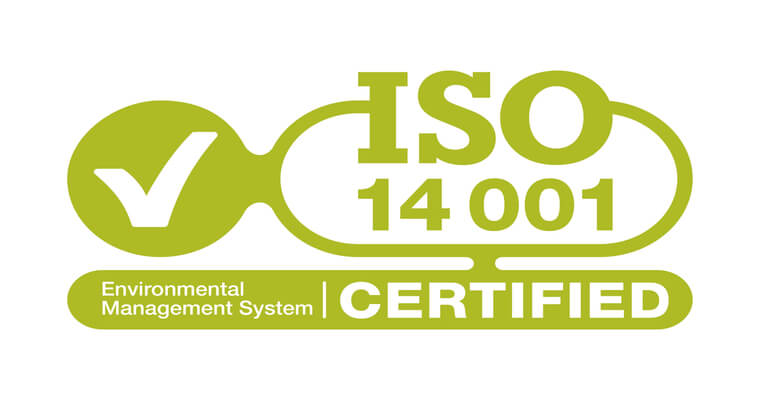
If you plan to implement an EMS and make it compliant with ISO 14001, here are the key elements you should consider.
1). Environmental Policy
The top management officials of your organization must define a comprehensive environmental policy, including controlling activities, resource uses, products, services, and compliance with legislative regulations.
2). Planning
The EMS should be established with procedures and regulation practices to be maintained to achieve the environmental targets of your business.
3). Implementation and Operation
Resources, including your organization’s staff, must have clearly defined rules and responsibilities in operating the EMS. Management representatives should document and communicate their roles to avoid conclusions or issues during implementation.
4). Evaluation and Corrective Measure
The operation of the EMS must be evaluated regularly. You should determine key environmental metrics and measure them to understand the effectiveness of your EMS. Take corrective actions wherever there is any inefficiency or nonconformance with environmental regulations.
5). Management Review
Top management officials should review the EMS at set internals to ensure it continually improves your performance in maintaining environmental sustainability and compliance with ISO 14001.
Since the most crucial part of getting the ISO 14001 certification is establishing a practical EMS, many businesses start by discovering more about what a successful EMS comprises. We have discussed what it is and what it is made of. If you plan to get certified with ISO 14001, ensure your business has all these elements.
Why is Environmental Management Good for Your Business?
Environmental Management is about implementing practices or measures to help reduce a business’s environmental impacts. ISO 14001 is the critical International Certification for Environmental Quality Management, and with the help TUV Austria Bureau of Inspection and Certification, your business can become ISO 14001 certified.
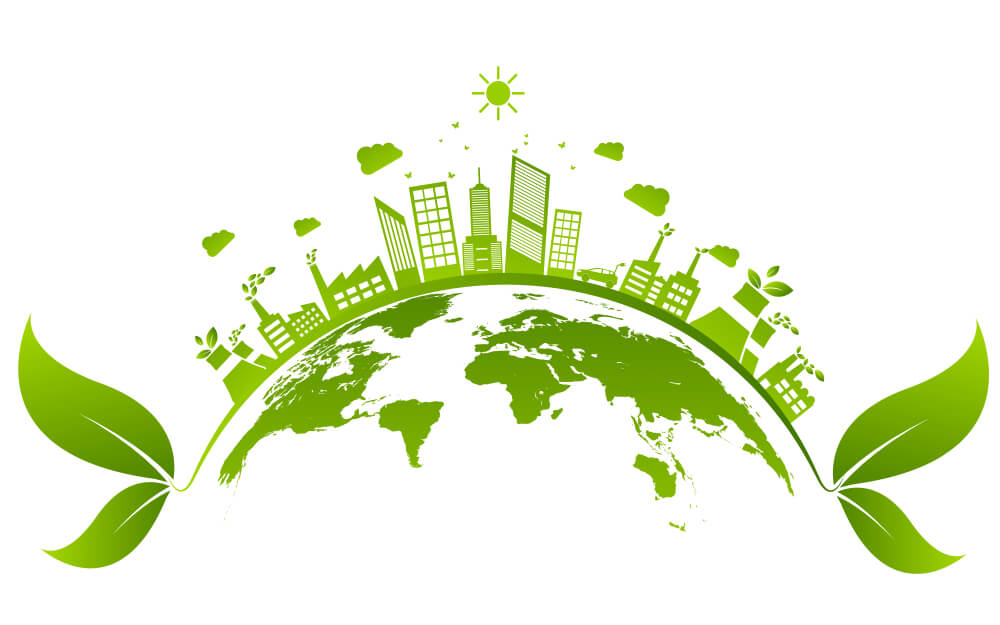
Besides ensuring your business has environmental responsibility, incorporating environmental management in your quality management system will also provide
- Cost Savings
- Resource Savings
- Enhanced Business Reputation
- Work Health and Safety
- Resource Recovery
- Environmental Compliance
Key Aspects Covered by Environmental Quality Management
- Energy Management
- Water Management
- Waste Management
1). Energy Management
Environmental Management under ISO 14001 certification demands reduced energy consumption. Some key ways to achieve energy reduction are:
- Conducting an Energy Audit
- Switching to Alternative Sources of Energy
- Using Energy Efficient Machinery for Production
- Using Efficient Fuel Vehicles for Transportation
2). Water Management
Reducing consumption and wastage of water is also included in environmental management. Some methods for water conservation in businesses are:
- Using Recycled Water Wherever Possible
- Reviewing Taps, Washers, Pipelines, and Seals Frequently
- Installing Rainwater Harvesting Equipment
3). Waste Management
Waste Management is an integral part of the environmental management system and is necessary for the judicious use of resources or raw materials at each production stage. Some ways to ensure proper waste management include:
- Classifying Wastes before Disposal
- Implementing a Waste Reduction Plan
- Introducing the Wastewater Treatment Method
- Purchasing Eco-Friendly Materials for Production and Packaging
These are the fundamental aspects that must be considered when a business is getting ISO 14001 certified. Your business will become more credible, responsible, and sustainable with the standards focused on energy, water, and waste management.
5 Ways the ISO 14001 Certification Helps with Environmental Management
With the growing threat to environmental sustainability, organizations today must put their best efforts into environmental management. The ISO 14001 Certification helps them to take a proactive stance towards managing the environment. It sets out the requirements to build an effective and comprehensive EMS (Environmental Management System) that would help them remain accountable to, react to, minimize, and prevent environmental impacts.

The ISO 14001 certification helps your business to accomplish its key environmental performance goals in the following ways.
- Reduction in environmental impacts by continuously monitoring, assessing, preventing, and managing the effects.
- Reduction in operational costs due to efficient use of resources and energy sources, reduction in wastes.
- Better environmental impacts or risk management enhance customer satisfaction and corporate reputation.
- Optimizing compliance by fulfilling legal and regulatory environmental requirements enhances tender eligibility.
- Integrating an environmental management system into other management systems and processes throughout your business further improves environmental performance.
Achieving the ISO 14001 Certification must be an essential requirement for every organization, no matter the size or nature of the business. They need to achieve it to demonstrate their efforts toward protecting the environment and preserving natural resources for future sustainability. The ISO 14001 standard helps to do that by implementing an EMS and integrating its environmental objectives into the business strategy.
What are the Benefits of ISO 14001?
ISO 14001 standards are a management tool. They do not press certified organizations to achieve the specific environmental aim. Instead, this standard demands certificated businesses to have a program system that must respect to manage their environmental impacts. It means that it has a plan to improve its environmental issues.
Wider Market Opportunities – ISO 14001 Certification opens up new opportunities in the market. Many suppliers and distributors want to partner with businesses that demonstrate environmental commitment.
Promotes Stakeholder Confidence – The certification also demonstrates the legal compliance of your business with industry-specific environmental regulations, which boosts confidence in stakeholders.
Reduced Risks – With a vital EMS in place, environmental risks are better controlled through the entire lifecycle of your products or services, and that can save you from legal suits, fines, or penalties.
Improves energy efficiency – Since this standard protects the environment, you could improve your energy efficiency.
Reduce Waste – Instead of throwing all of your rubbish into a bin, this standard guides you on recycling and decreasing waste.
Increase Profit – Potential customers are more likely to work with you than with an organization with ISO 14001.
Under-Pin Your Marketing Message – Having ISO 14001 is a perfect thing to reflect through your marketing, as it shows you consider the environment.
Encourage Engagement of Employees – This certification is a great way to encourage employees to do their part when thinking about the environment.
More benefits of ISO 14001 standard are as follows:
- This standard helps organizations meet and maintain regulatory and legislative requirements.
- This certification minimizes the environmental impact of products, activities, and resources.
- It promotes environmental awareness.
- Better conformance to environmental regulations.
- Greater Marketability.
- Better use of resources.
- Higher quality goods and services.
- Increased levels of safety.
- Improved image and increased profits.
- Meet compliance with statutory and regulatory requirements.
- Reduce Environmental Hazards.
- Reduce Energy, Waste, and Material Costs.
- Improve overall operations and reduce risks.
- Improve company image and reputation.
- Win more bids where certification is a requirement or a competitive advantage.
ISO 14001 Certification: An Effective Checklist
When looking for ISO 14001 Certification, probably, you have already started thinking about the implementation process. Before jumping over the implementation process, you must learn about ISO 14001 standards. ISO 14001 is an internationally acknowledged standard focusing on reducing environmental impact and preserving sustainability. The main requirement of this standard is the implementation of an Environmental Management System EMS.
Commitment and Policy
In this section, you need to define your business goals, objectives, and the reasons why your business is looking for this environment management standard. It should clearly demonstrate that your business objectives align with ISO 14001 requirements. While defining the policy, you should consider a couple of things:
- Your Business Goals.
- The mission of Your Business.
- The vision of Your Business.
- Your Existing Business Management System.
Planning
This phase is considered the pillar of the entire implementation process. It would be better to ask a professional quality assurance consultant to plan the EMS. This planning must be logical enough. Sometimes, many companies outline a plan that is far from reality. This is a waste of time and money. If you want to avoid wasting time and money, you should make the plan very carefully. It should be in the same line with your business objectives and business management system.
Implementation
Once you have made the plan, it’s time to implement the EMS. Implementation must be flawless. If anything goes wrong during the implementation process, you will end up with a mess. You should opt for a testing method to ensure that the EMS is all set to work as per your expectation.
Evaluation and Review
Your responsibility does not end with implementation. After implementation, you should keep the system reviewed to esnure continual improvement. Continuous assessment will enable you to determine the things needed for the next milestone.
Clauses of ISO 14001
We all know that ISO 14001 standard offers a set of elements to implement the Environmental Management System effectively. Each of these requirements is meant for every organization. The latest version of ISO 14001 (ISO 14001:2015) contains 10 sections or clauses. The first three sections describe the standard, while the rest contain the essential requirements of ISO 14001. Since you will incorporate EMS into your business management system, you need to understand the system’s structure first.

Clause 4. Context of the Organization
This section narrates the general requirements for an EMS. It helps you build an understanding of the present context of your organization.
Clause 5. Leadership
Leadership involvement has been greatly prioritized in this latest version of the ISO 14001 standard. The senior management should conduct a management review regularly.
Clause 6. Planning
This section contains requirements that help to identify and develop a proper risk management approach.
Clause 7. Support
This is the most significant section within the structure of the EMS, as per the ISO 14001 certification consultants. It suggests how you should control the documented information.
Clause 8. Operation
The operation is a small section. It highlights the requirements for controlling the operations running within the structure of your business.
Clause 9. Performance Assessment
It has been said that clause nine is the second largest section in the structure of ISO 14001. It narrates how to monitor the EMS, which parameters should be used, and how to utilize the records.
Clause 10. Improvement
For continuous improvement, you need to arrange regular monitoring. This section contains requirements that help you deal with the nonconformity in your EMS processes and corrective and preventive actions. It will help you rectify the defects before the final audit.
What to Do for ISO 14001 Compliance Audits?
Implementing an environmental management system (EMS) across your organization is not the only step toward obtaining ISO 14001 certification. You need to benchmark each of your EMS practices against the standard’s specifications. Auditors will assess your EMS thoroughly and ensure its compliance with ISO 14001 requirements, declaring its eligibility for certification.
Once certified, you will also need to run surveillance audits at regular intervals (at least twice a year) to ensure it consistently complies with the best practices and requirements of ISO 14001. Auditing plays an integral role in certification.
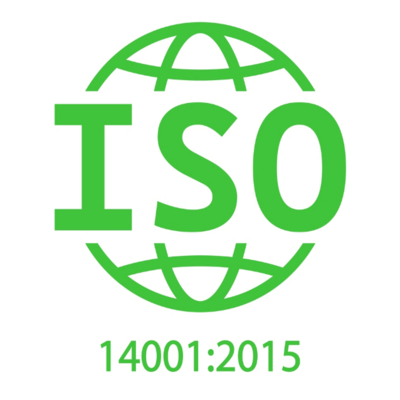
During audits, TUV Bureau of Inspection and Certification professional auditors will assess your EMS, starting with the documented procedures.
They will assess:
- Whether your EMS is up to date, i.e., following all the latest general environmental guidelines imposed by the government.
- Whether EMS is ISO compliant with every requirement of the latest version ISO 14001.
- Whether training of employees for environmental practices is up to date.
- Whether the documentation is done correctly and everything is maintained properly ), i.e., an organization does not miss any key records regarding environmental management).
Auditing your EMS with professionals will result in the following outcomes-
- The Discovery of minor nonconformities in any aspect of EMS means it has slightly missed the policy or procedure mentioned in ISO 14001. This can be rectified easily by making some quick reformations.
- Identifying major nonconformities in EMS will put your compliance with ISO 14001 at risk, which means you can fail to renew your certification in the next cycle. For this, auditors will give you time to make changes and pay a second visit, during which you present a plan of some corrective actions to resolve the non-conformities.
- Auditors give general recommendations or suggestions on improving the effectiveness of EMS.
Auditors, or as they are sometimes called internal surveillance auditors, are vital for maintaining any ISO Certification, including ISO 14001 certification. They are useful for ensuring that your implemented EMS is still competent and following the laid-out procedures or regulations of the standard. In short, renewing your ISO certification and maintaining it to show your environmental responsibility consistently will be easy if you regularly perform audits.
How to Get ISO 14001 Citification?
ISO 14001 Citification is an Internationally agreed standard that sets out the requirements for an environmental management system. It helps organizations improve their environmental performance through more efficient use of resources and waste reduction, gaining a competitive advantage and the trust of stakeholders.
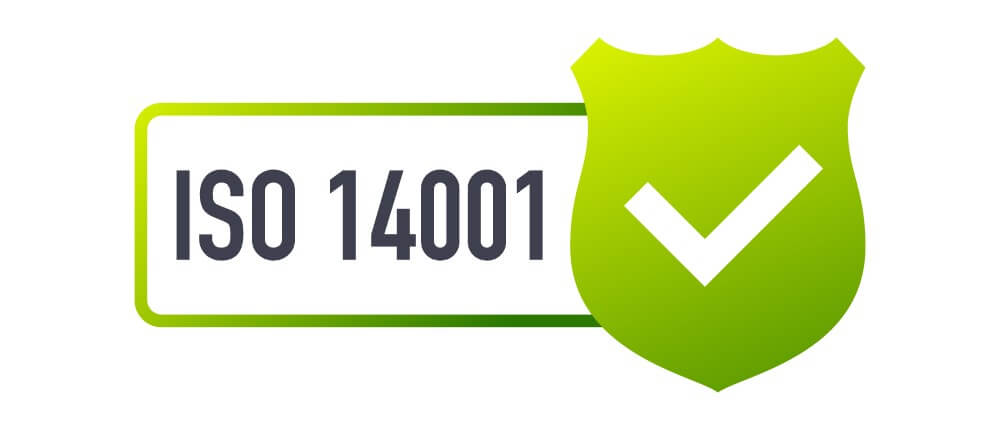
Here are the 6 steps to getting ISO 14001 certification
- Assign a Project leader to plan and train the organization on how and when the implementation of ISO 14001 will occur.
- Develop processes and procedures that fulfill ISO 14001 requirements.
- Put the ISO 14001 standard into practice.
- Conduct Internal Audits.
- Hold a management review.
- Registration Audit Options.
These steps are challenging to manage because of the complexity of the standard.
- It should be performed by experts that have experience in achieving ISO 14001 certification for an organization.
- Are realistic with the proper coaching and training.
What are the ISO 14001 Requirements?
ISO 14001 is the International standard that specifies effective environmental management system (EMS) requirements. It provides a framework that an organization can follow rather than establishing environmental performance requirements. The ISO 14001 environment management framework helps a business achieve ecological performance.
Environmental Impacts – The EMS should enforce processes and practices depending on the environmental impacts of business operations. These are the direct effects caused by the natural surroundings and resources and indirect ones like exhaustion of resources, which lead to their non-availability in the future.
Resource Management – The EMS must regulate the use of each resource in the business, such as natural materials, power energy, fuels for heavy equipment, and workforce. It is necessary to optimize the use of resources and ensure efficient performance.
Management Responsibility – The organization needs to identify the areas where environmental practices and regulations are required, and the management needs to promote these responsibilities.
Evaluation and Improvement – The organization should review the structure of the EMS and its functions regularly to determine how to improve its environmental performance. Evaluating the effectiveness of EMS practices, measuring the outcomes, and implementing improvements will help to facilitate continual improvement.
- Scope of the Environmental Management System.
- Environmental Policy.
- Evaluation of Environmental Risks and Opportunities.
- Evaluation of Environmental Aspects.
- Objectives and plans for achieving them.
- Operational control procedures.
- Procedure for Emergency Preparedness and Response.
- List of Interested Parties, Legal and Other Requirements.
- Competence Records.
- Evidence of Communication.
- Monitoring Performance Information.
- Compliance Obligations Record.
- Internal Audit Programme and Results.
- Nonconformities and Corrective Actions.
Now You’re ready for this certification.
ISO 14001 Certification in Pakistan
No particular business or industry is eligible for the ISO 14001 Certification in Pakistan. Regardless of size, any company can achieve it to ensure resource sustainability and prevent harmful environmental effects.
However, certain businesses specifically need this certification, such as oil and energy, chemical processing, construction, manufacturing, pharmaceuticals, and mining. The certificate leaves noticeable impacts on their day-to-day operations on the environment.
What is ISO 14001 Certification Cost in Pakistan?
It is impossible to determine the exact certification cost without a detailed assessment. Price also depends on many factors like:
- Size of organization.
- Structure of operations.
- Maturity and complexity of existing systems.
Generally, this certification cost in Pakistan is not much compared to the improved efficiency in process and brand equity benefits it offers organizations.
Why You Choose TUV Austria Bureau of Inspection & Certification?
While any ISO standard defines complex requirements, getting certified is an intricate and step-by-step approach. The reason for partnering with the TUV Austria Bureau of Inspection & Certification for the ISO 14001 certification is straightforward. They make the process hassle-free and ensure that you meet every compliance requirement perfectly. In short, TUV Austria Bureau of Inspection & Certification services make the process straightforward for you and get you certified.
There are steps undertaken by the TUV Austria Bureau of Inspection & Certification to take your business towards the ISO 14001 certification success.
1). Initial Consultation
At this stage, they would outline the standard’s requirements and explain how to meet them with an EMS (Environmental Management System).
2). Produce the Documents
The TUV Austria Bureau of Inspection & Certification team would assess your existing environmental procedures and guide you in documenting the new methods of the EMS. They help at do the documentation in detail so that your employees know how to work going forward to maintain ISO 14001 compliance.
3). Employee Training
The TUV Austria Bureau of Inspection & Certification would team up and collaborate with your organization’s senior managers to conduct employee training. It is needed to put the ISO 14001 requirements into practice.
4). Registering with TUV Austria Bureau of Inspection & Certification
A certification body like TUV Austria Bureau of Inspection & Certification is required to award the ISO 14001 certificate to your business after a thorough audit.
5). The ISO 14001 Certification
The Auditors of the TUV Austria Bureau of Inspection & Certification would perform an internal audit to ensure that your organization is ISO compliant. The external auditors would then substantiate your conformance and award the certificate.
With this breakdown of the certification process into these easy steps, achieving the ISO 14001 certification is no longer a complex task for businesses. However, get the most reliable services from the TUV Austria Bureau of Inspection & Certification, which provides end-to-end assistance throughout your entire certification journey. We will also charge competitive prices for our services and will be flexible with our services—the more relaxed our approach, the less the investment required for your certification.
TUV Austria Bureau of Inspection & Certification has a highly experienced staff and has assisted many companies in becoming ISO certified. We have over 25 years of combined ISO experience. TUV Austria Bureau of Inspection & Certification is the ISO expert! We know what our clients expect and can give you the assistance you need for guaranteed results.
TUV Austria Bureau of Inspection & Certification’s huge umbrella of certification services includes:
- ISO 9001 – Quality Management System
- ISO 45001 – Occupational Health & Safety Management System
- ISO 55001 – Asset Management — Management Systems Requirements
- ISO 27001 – Information Security Management System
- ISO 20000 – IT Service Management System
- ISO 22000 – Food Safety Management System
- HACCP – Food Safety Management System
- Halal Certification
- ISO 21001 – Educational Organizations Management System
- ISO 29990 – Learning Services Management System
- ISO 20121 – Sustainability Event Management System
- ISO 22301 – Business Continuity Management System
- ISO 37001 – Anti-Bribery Management System
- ISO 28000 – Supply Chain Security Management System
- ISO 13485 – Quality Management Systems for Medical Devices
- ISO 39001 – Road Traffic Safety Management System
- ISO 31000 – Risk Management – Guidelines
- ISO 22716 – Good Manufacturing Practices for Cosmetics
FAQS
What is ISO 14000?
ISO 14000 is a series of Environmental Management Standards developed and published by the International Organization for Standardization (ISO) for organizations.
- Reduces Environmental Liability
- Enhances Public Image and Reputation
- Assures Customers
- Satisfies Investor Criteria
- Reduces Your Consumption of materials and energy
- Facilities permits and authorizations
- Reduces the cost
- Improve industry-government relations.
What is the difference between ISO 9001 and ISO 14001?
ISO 9001 and ISO 14001 are among the most well-known standards ever. More than a million organizations implement them in some 175 countries.
- ISO 9001 helps organizations to implement quality management.
- ISO 14001 helps organizations to implement environmental management.
How long does it take to get a Certification?
The average amount of time it takes to design, implement and certify for ISO 14001 can take anywhere from 6 months to 2 years, depending on the size and complexity of the organization.